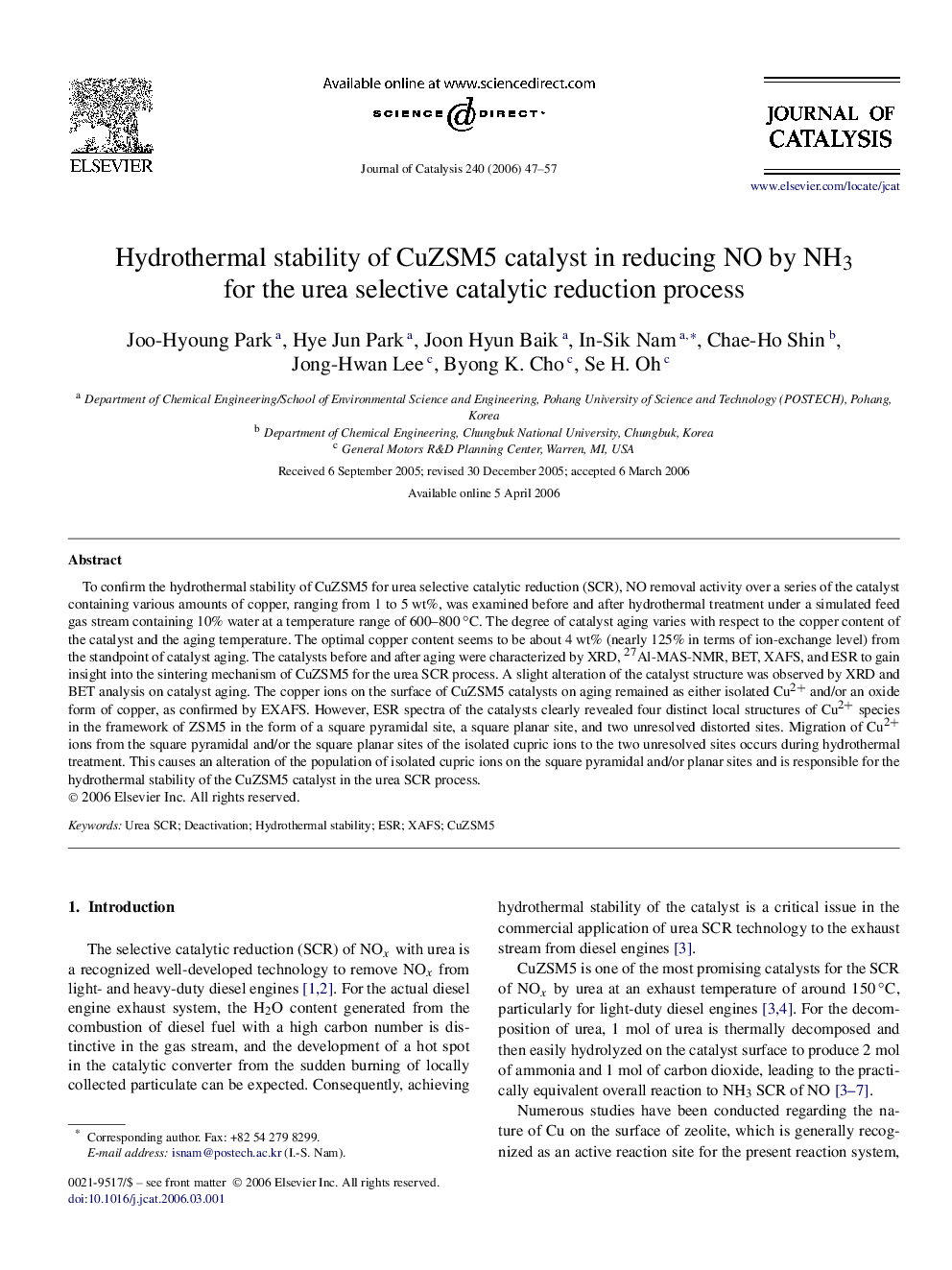| Article ID | Journal | Published Year | Pages | File Type |
|---|---|---|---|---|
| 63270 | Journal of Catalysis | 2006 | 11 Pages |
To confirm the hydrothermal stability of CuZSM5 for urea selective catalytic reduction (SCR), NO removal activity over a series of the catalyst containing various amounts of copper, ranging from 1 to 5 wt%, was examined before and after hydrothermal treatment under a simulated feed gas stream containing 10% water at a temperature range of 600–800 °C. The degree of catalyst aging varies with respect to the copper content of the catalyst and the aging temperature. The optimal copper content seems to be about 4 wt% (nearly 125% in terms of ion-exchange level) from the standpoint of catalyst aging. The catalysts before and after aging were characterized by XRD, 27Al-MAS-NMR, BET, XAFS, and ESR to gain insight into the sintering mechanism of CuZSM5 for the urea SCR process. A slight alteration of the catalyst structure was observed by XRD and BET analysis on catalyst aging. The copper ions on the surface of CuZSM5 catalysts on aging remained as either isolated Cu2+ and/or an oxide form of copper, as confirmed by EXAFS. However, ESR spectra of the catalysts clearly revealed four distinct local structures of Cu2+ species in the framework of ZSM5 in the form of a square pyramidal site, a square planar site, and two unresolved distorted sites. Migration of Cu2+ ions from the square pyramidal and/or the square planar sites of the isolated cupric ions to the two unresolved sites occurs during hydrothermal treatment. This causes an alteration of the population of isolated cupric ions on the square pyramidal and/or planar sites and is responsible for the hydrothermal stability of the CuZSM5 catalyst in the urea SCR process.
